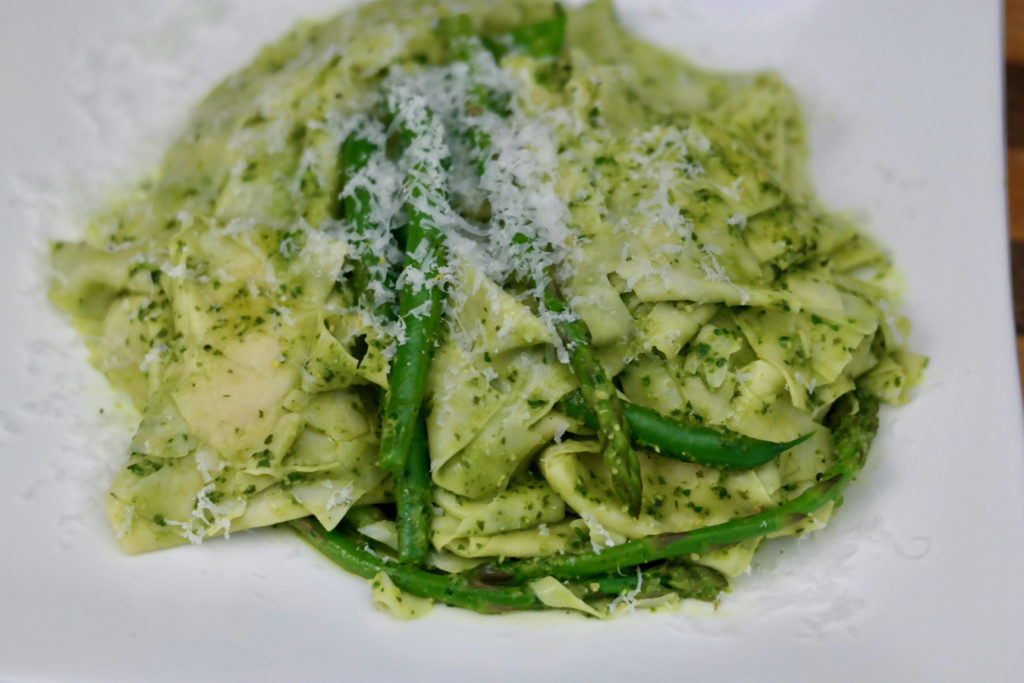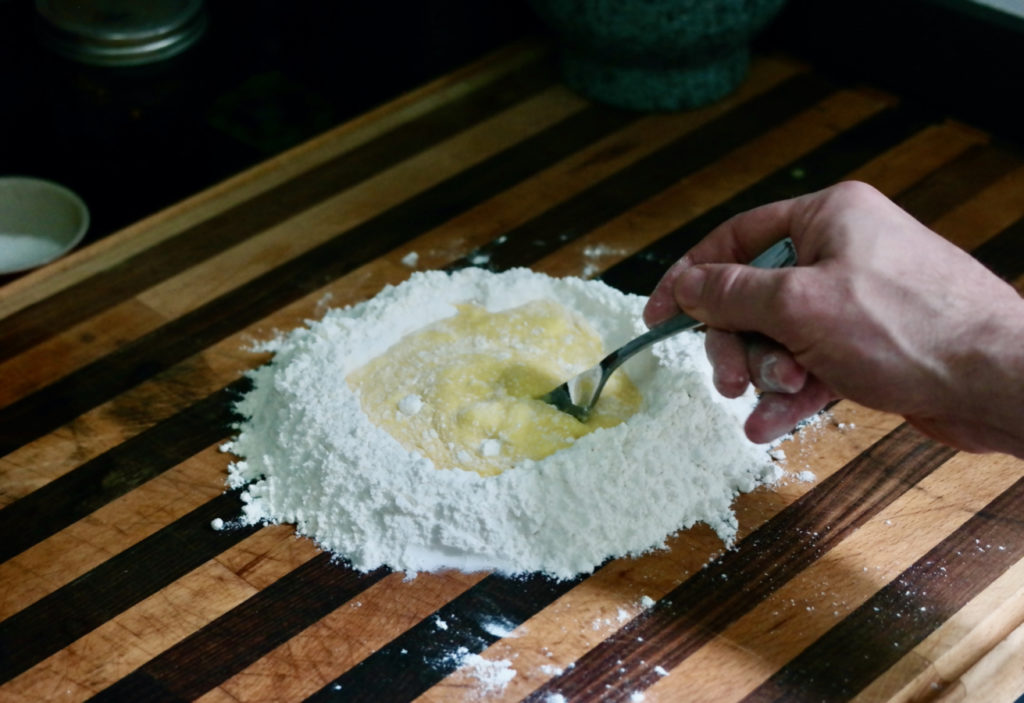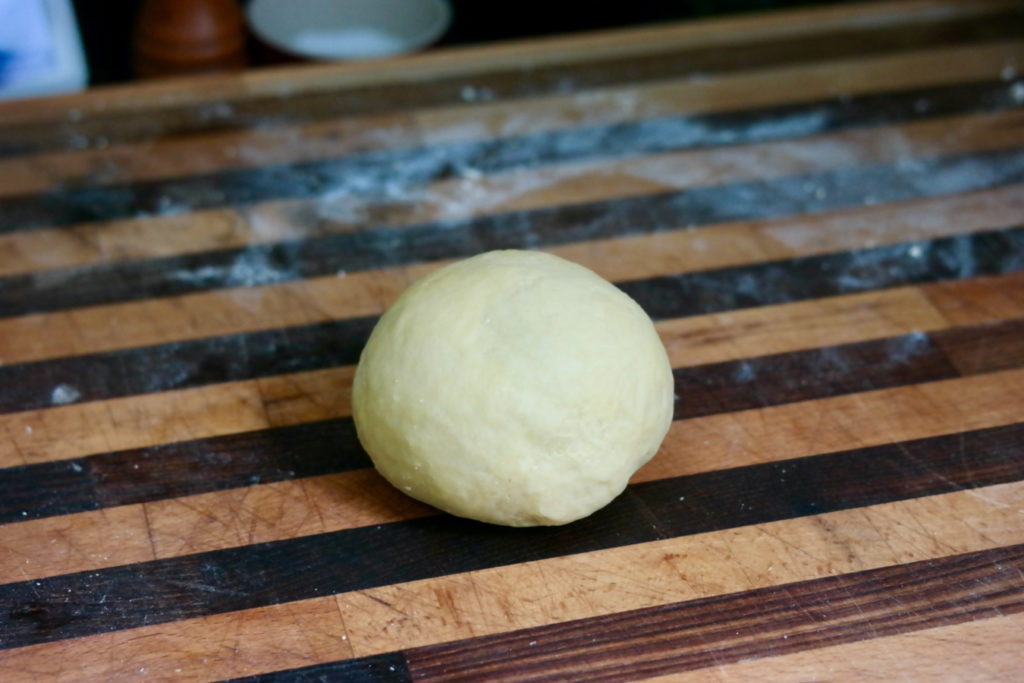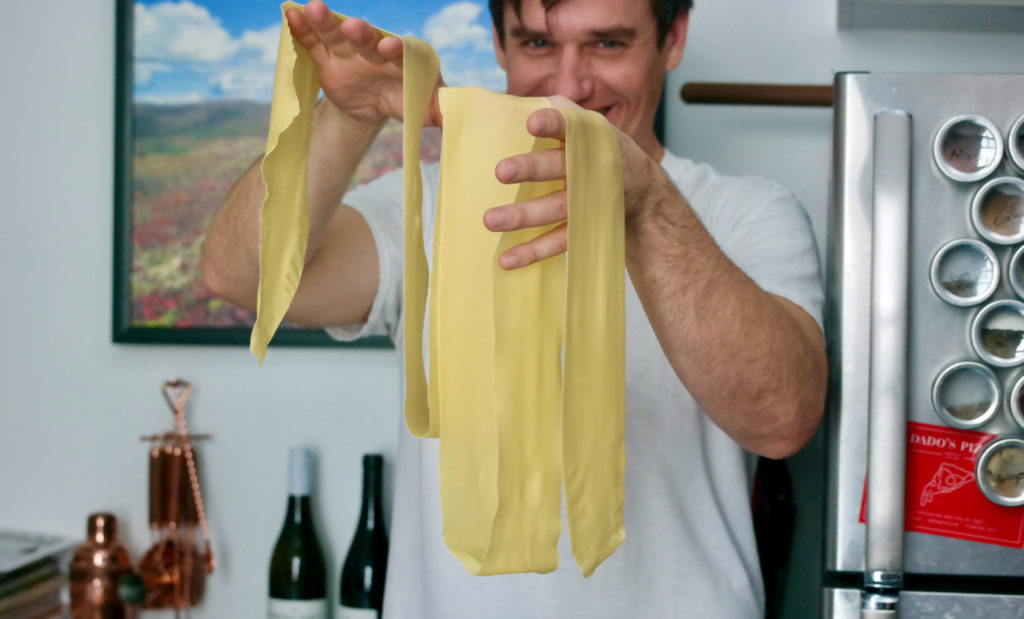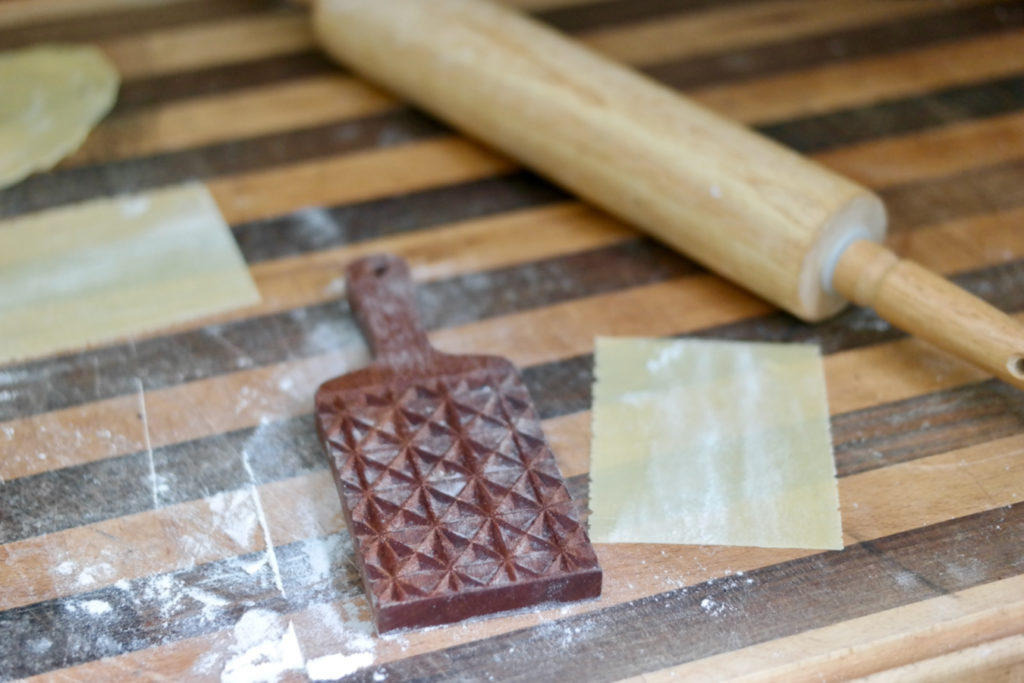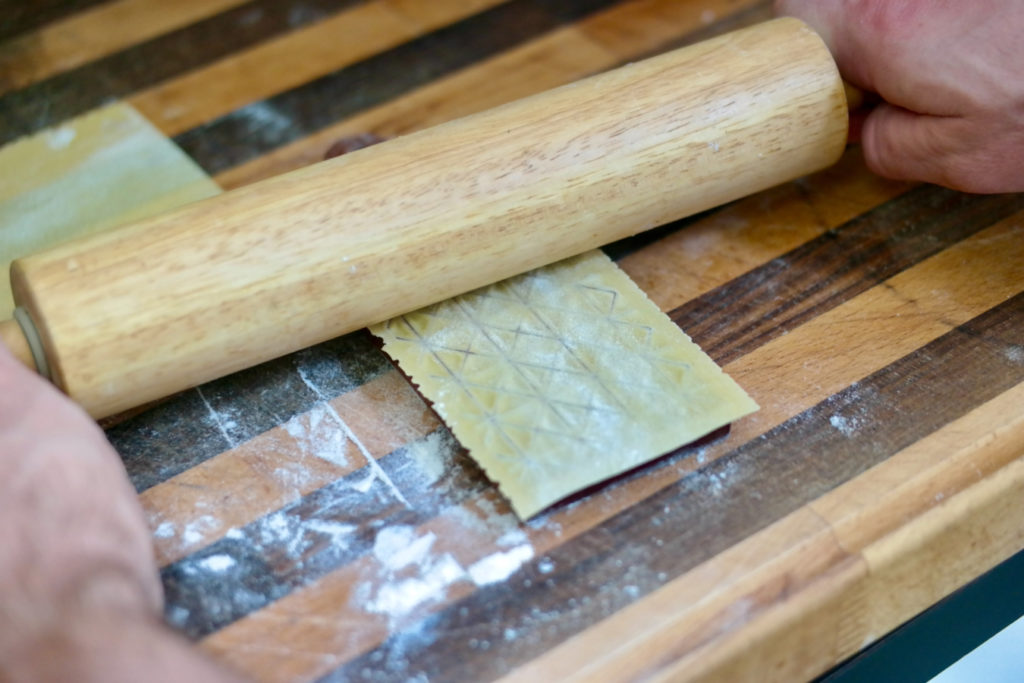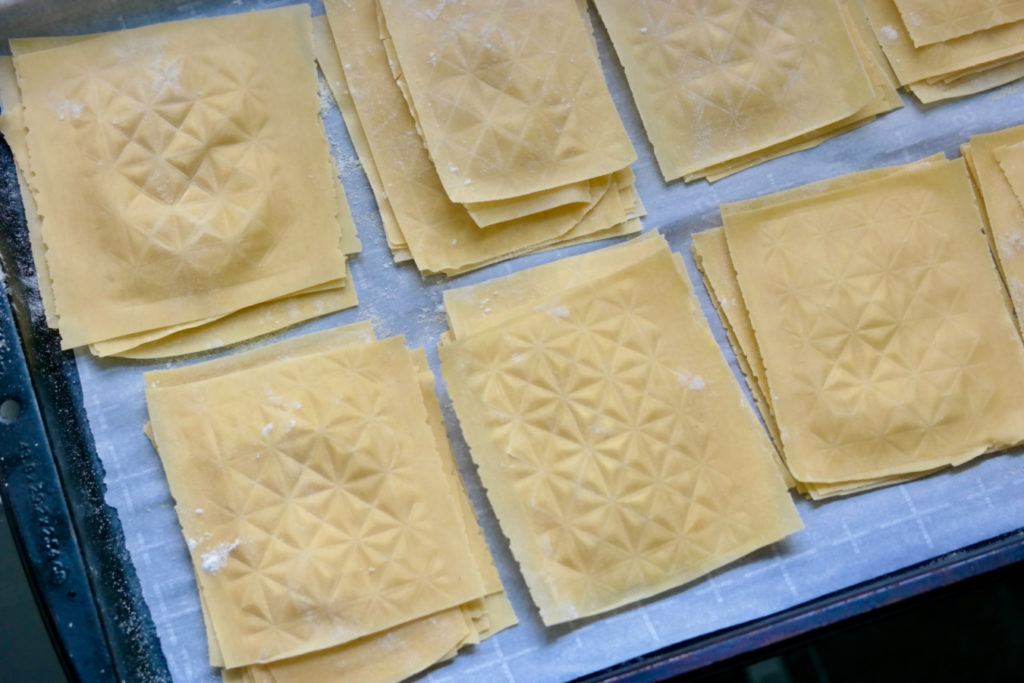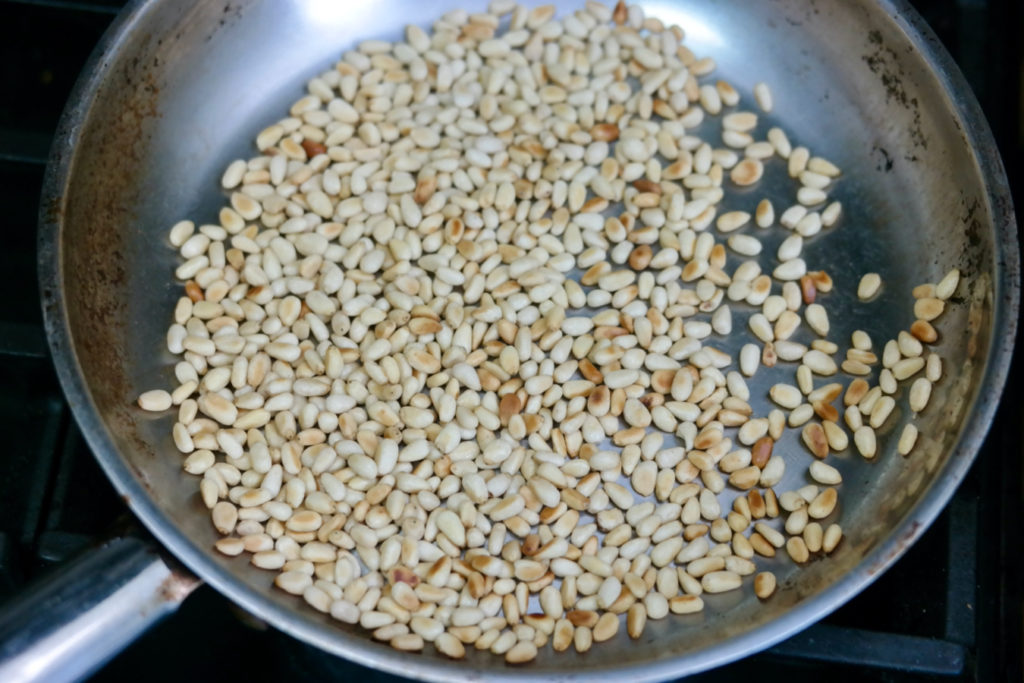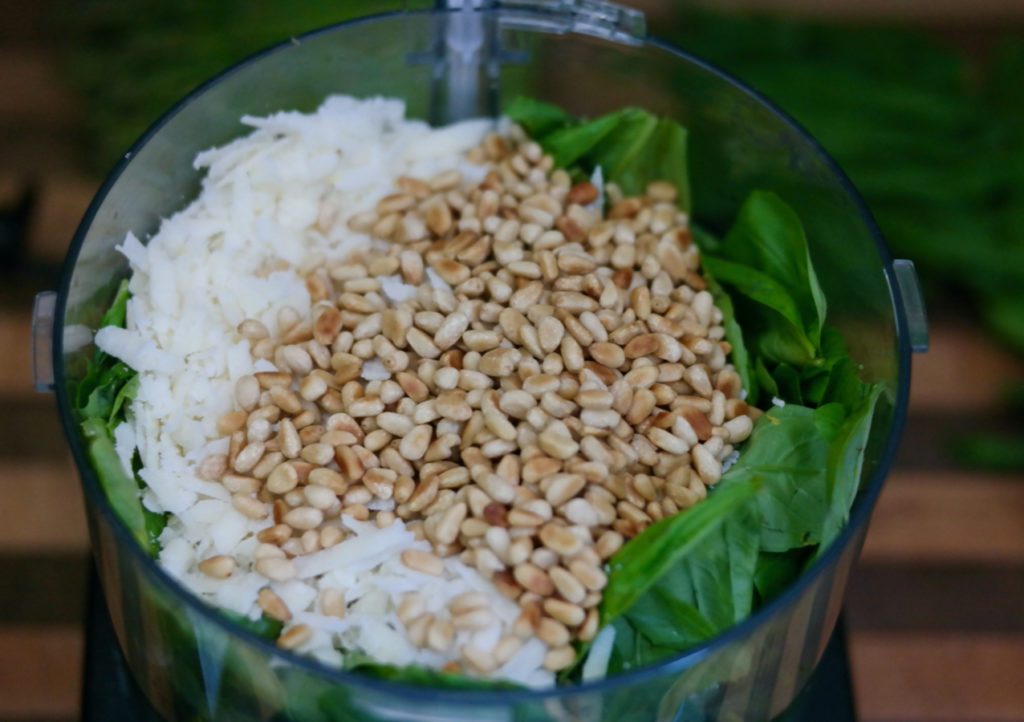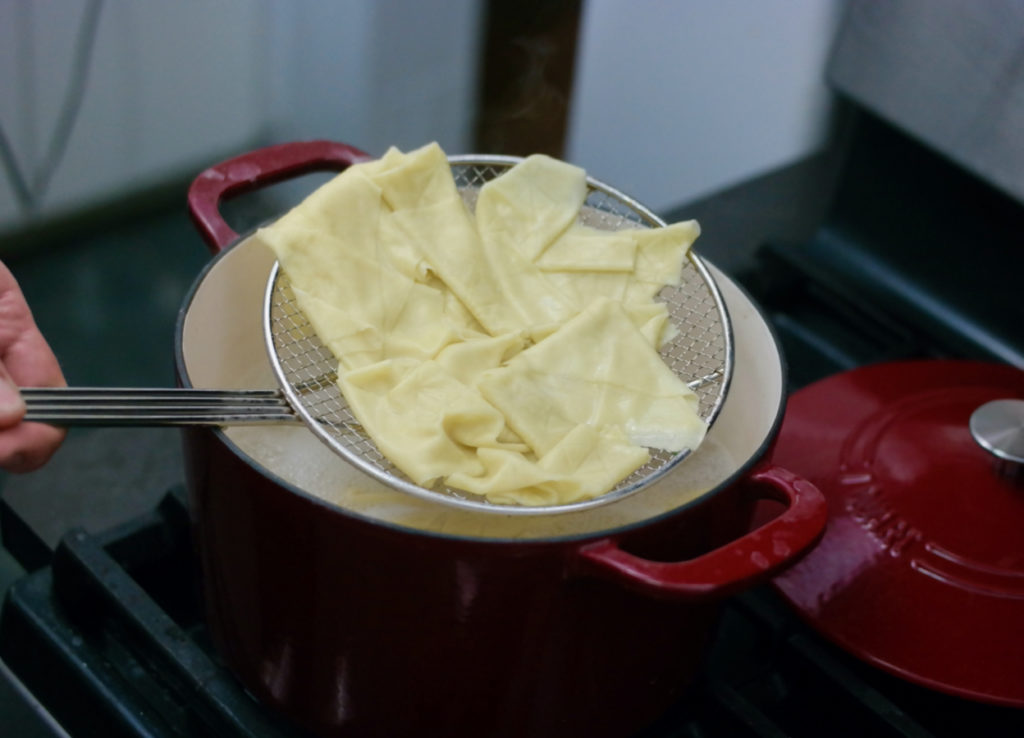After a break to do other stuff with our weekends, we’re back to our newfound hobby of making all kinds of different and interesting pastas. Recently we tried our hand at mandilli di seta, which comes in the form of very thin, patterned sheets. This particular pasta is from the region around the city of Genoa, and in the local dialect the names translates to “silk handkerchief”. Since pesto sauce is also a Genoese specialty, we decided to pair it with the mandilli and add in some colorful vegetables as well. This time around we tried out a different type of egg-based dough for our pasta, and we’ll walk you through this recipe from making and shaping the dough through to the delicious end result.
To make this, you’ll need:
- 00 flour
- 5 eggs
- Olive oil
- Semolina flour
- 2 bunches of basil
- A bunch of parsley
- Parmesan cheese
- Pine nuts
- A bunch of asparagus
- 8 ounces of green beans
- 4 ounces of snap peas
** Plus you’ll also need a patterned cavarola board to make the pasta – we got a mini version from this Etsy shop – and a pasta roller attached to a stand mixer
To make the dough, measure out 2 1/4 cups of 00 flour and place it in a mound on a wooden work surface. Sprinkle a large pinch of salt into the flour and mix it in with your hands, then make a divot in the middle of the flour. In a bowl whisk together 2 whole eggs, 3 egg yolks and a tablespoon of olive oil, then carefully pour this into the divot you made. Use a fork to gradually stir the egg mixture into the flour, making sure not to spill the eggs out onto your work surface.
Once the eggs are fully incorporated into the flour, use your hands to finish mixing everything into an even dough. Then dust your work surface in more 00 flour and knead the dough for 10 minutes, shaping it into a smooth ball.
Cover the dough in plastic wrap and set it aside for an hour. When you’re ready, set up the pasta roller on your stand mixer and make sure it’s dialed to the 1 setting. Cut your dough into 4 pieces and take one piece (keep the rest wrapped up) and flatten it out with your hands. Send it through the pasta roller, then fold both ends in to the middle and send it through the roller again. Do this two more times, then set the roller on the 2 setting and put the dough through – this time it should come out thinner. Turn the roller to the 3 setting and put the pasta sheet through again, then repeat with the 4, 5 and 6 settings. The dough should get thinner and longer each time, until it eventually looks like this:
Lay the pasta sheet on a piece of parchment paper dusted with 00 flour, and sprinkle the top of each sheet with more flour. Repeat this process for the other three pieces of dough, and once it’s all been rolled out take one pasta sheet and cut it into pieces that are the same size as your cavarola board.
Dust the board with 00 flour, place one sheet at a time on top, and use a rolling pin to press the sheet into the board until the pattern is imprinted on the sheet.
Line a baking sheet with parchment paper and sprinkle it with semolina flour, then dust the back of each piece of pasta in 00 flour and place on the parchment paper. You can stack the mandilli in groups of 10, and when all the pasta is shaped cover the baking sheet with plastic wrap and place in the fridge until you’re ready to cook it.
To make your pesto sauce, measure out 1/3 cup of pine nuts into a skillet and toast over medium heat for around 3 minutes, until they just start to brown.
Now place all your basil leaves and half of your parsley leaves in a food processor, along with 4 garlic cloves, 1/4 cup of grated Parmesan, a pinch of salt, and the pine nuts.
Add in 1/2 cup of olive oil and blend it all together until you have a sauce, adding more olive oil as necessary until you get a good consistency. Scrape the pesto out into a large mixing bowl.
To cook your mandilli, boil one stack of pasta at a time in salted water, peeling the sheets apart as you drop them in. They’ll need to cook for just 30 seconds, then use a spider strainer to scoop them out of the water.
Place the mandilli into the bowl with your pesto, and repeat this process until you’ve cooked all the pasta. Then trim your asparagus and drop it, plus the rest of your vegetables, into the boiling water, let them cook for around 2 minutes, and scoop them into your mixing bowl as well. Finally, take 1/4 cup of the pasta cooking water and add it to your sauce, then gently mix the pasta, vegetables, and pesto together. Now you can plate up individual servings of pasta and top with extra grated Parmesan.
As you can probably tell, making mandilli di seta is a rather time-intensive process: you’ve got to make the dough, roll it through 10 times in total, handle some very delicate (and long) pasta sheets, then cut and shape the pasta, all before you even get to making the sauce. You’ll also need to have some extra tools – namely, the cavarola board and pasta roller – on hand. We say this not to dissuade you, but to prepare you, because we certainly enjoyed trying our hand at this new shape and eating our tasty result. We’ll continue to try out new shapes and share our results with you, so check back again soon to see what new and interesting pastas we’ve cooked up!
